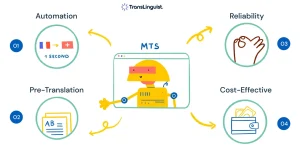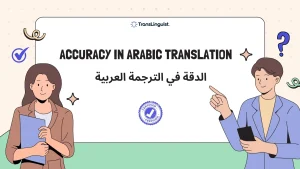Let’s be realistic: providing worship services for non-native speakers is a need, not only a perk, if your church aims to honestly reflect the varied population it serves now. The United States now boasts more than 350 languages. Three. hundred fifty and also, Chances are, someone nearby is praying in a language you do not know when you enter any city or even a tiny town. There is no need here. It’s a gift and an opportunity to create for every heart a real home in your ministry.
At TransLinguist, we’ve worked with congregations from Brooklyn to Boise, and one thing keeps coming up: people want to worship in the language that speaks to their heart. Not just hear it translated. Feel it. And honestly? When someone hears the Gospel in their mother tongue, the one they cried in as a child, dreamed in as a teen, that’s when something deep shifts.
So how do you make space for that? Here are five practical ways to create multilingual worship services that don’t just check a box… but actually welcome people in.
Offer Real-Time Translation Services
This one’s kind of a game-changer. Live interpretation during worship? Huge. You don’t need a full booth like the UN (though that’d be cool). But headset systems, IR, or FM can let people listen in Spanish, Mandarin, Arabic, ASL, or whatever languages your community actually speaks. And you don’t have to translate everything. Start with the sermon. Maybe the announcements. One or two languages. Build from there. Pro tip? Partner with a pro translation service.
Provide Multilingual Worship Materials
Think about the first time you walked into a new church. Confusing, right? Now imagine doing it in a language you’re still learning. Simple things help. Bulletins in Spanish. Hymn lyrics in Korean. A welcome card in Arabic. One church in Minneapolis prints dual-language signs: “Nursery → / Guardería →”. Small thing. Big signal: You belong here.
Put those materials online, too. PDFs, sermon notes, even a “Newcomer Pack” in five languages. Make it easy to download. Shareable. It’s not about perfection. It’s about saying, “We thought of you.”

Train Welcomers in Cross-Cultural Communication
Hospitality is more than just a grin at the door. Particularly in your Worship services for non-native speakers, it is how you speak and listen. Really train your greeters. Not only “be courteous” but also: slow your speech, stop idioms (“God opened the door?!” What door?), gestural and visual aids. To a fresh immigrant from West Africa, I once heard someone shout, “Blessed be the name of the Lord!” The man searched for a name tag. True narrative. Consider as well a “Language Buddy” initiative inside your company. Match a native speaker with someone yet studying. Not for mentoring. For friendship. Coffee. life. Because faith grows in relationship, not just translation.
Use Tech Smartly
You don’t need a big budget. But you do need to get creative. Live subtitling? Tools like Otter.ai or Google’s live translate can run subtitles during services or streams. One church in Seattle projects them on the side screen discreetly, which is helpful. Record sermons. Add subtitles. Post them on YouTube. We’ve seen translated videos get more views outside the congregation than in. Which, honestly? That’s kind of the point. Anyway, tech isn’t the whole solution. But it’s a powerful bridge.
Partner With Language Experts
Let’s be real: Google Translate isn’t going to cut it when it comes to words like “repentance” or “grace.” And cultural nuance? That’s where things really fall short.
Don’t go it alone.
Partner with professionals who understand both language and culture. At TransLinguist, we’ve helped churches deliver translations that truly resonate, whether it’s sermon interpretation, multilingual bulletins, or accurate subtitling for YouTube videos and livestreams.
Also, tap into your community. Connect with local language schools, refugee centers, or simply sit down with bilingual members of your congregation. Host listening circles with international students.
Ask questions like:
- What helps you feel included?
- What language barriers are frustrating?
- What would make you feel more at home or more likely to invite a friend?
And here’s the key: act on what you hear.
Conclusion
Creating inclusive worship services for non-native speakers is about love, dignity, and unity, not just language. Your congregation can become a genuine reflection of the worldwide Body of Christ by accepting church language access. At TransLinguist, we provide professional, empathetic translation and interpretation solutions fit for religious groups to help you overcome linguistic obstacles. Prepared to make your church more hospitable? Contact TransLinguist right away for a complimentary consultation on multilingual ministry options. Consultation on multilingual ministry solutions.
FAQs
Inclusive worship services for non-native speakers are ?
Designed for those who do not speak the main language fluently, these church services employ translation, bilingual materials, and cultural sensitivity to enable full understanding and participation.
Why does church language need to be accessible?
Language obstacles can hinder spiritual development and community interaction. Accessibility guarantees everyone—whatever language—access to the Gospel and a felt welcome.
How do tiny churches pay for multilingual church services?
Start small: create printed bilingual handouts, employ volunteer translators, or utilize free subtitles tools. One does not need a large budget to have a major influence.
In worship, what distinguishes interpretation from translation?
While interpretation is voiced (e.g., live sermon translation), translation is written (e.g., bulletins). Both are essential for language inclusion in worship.
Technology can take the place of church human translators.
Although they lack subtlety and spiritual sensitivity, artificial intelligence tools can be quite helpful. Professional human translators like those at TransLinguist guarantee precision and emotional relevance for important messages.
How do I choose which languages to focus on?
Look around your community and church. Search U.S. Census statistics or team up with local groups to determine the most often spoken languages in your area.



